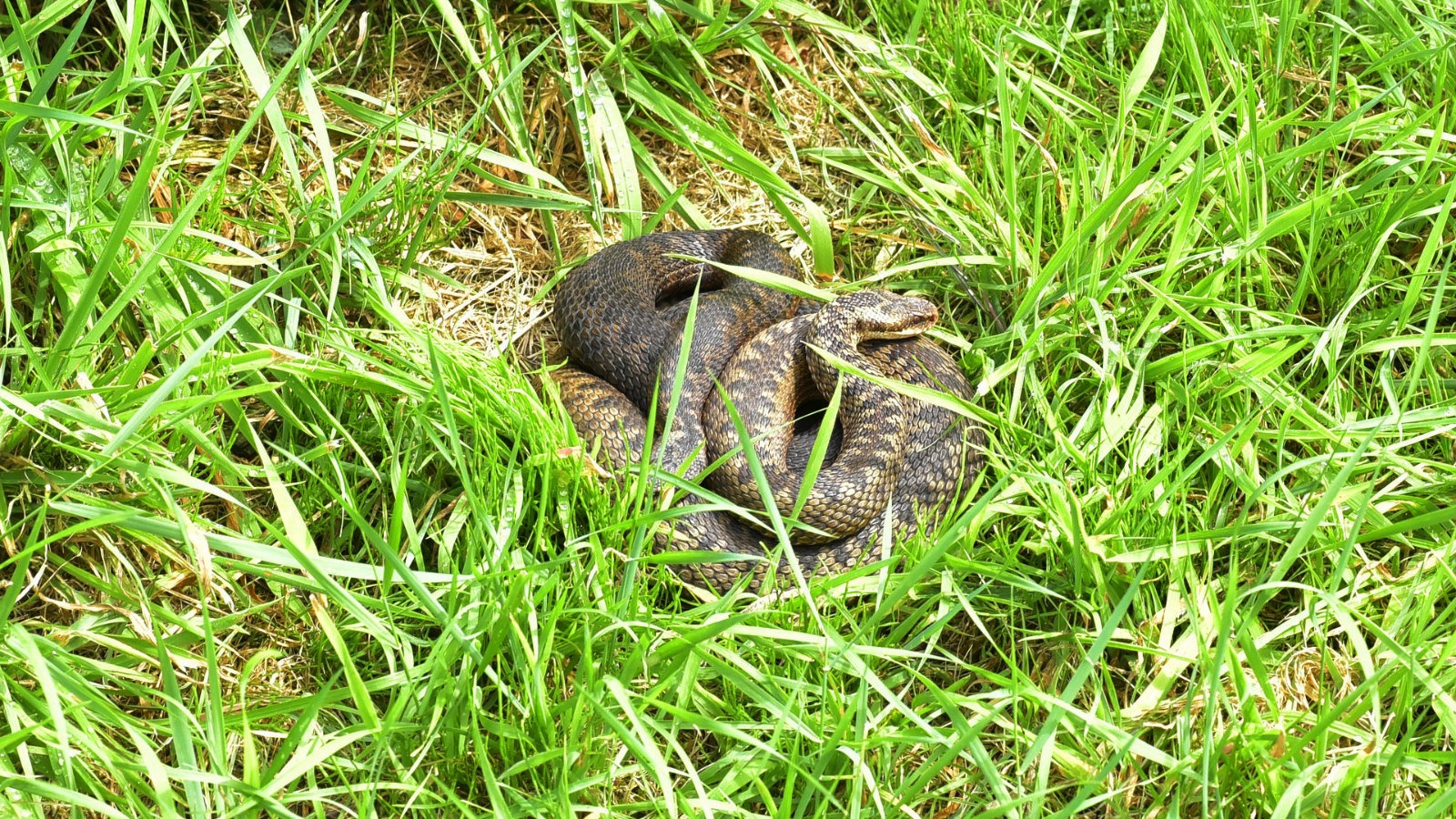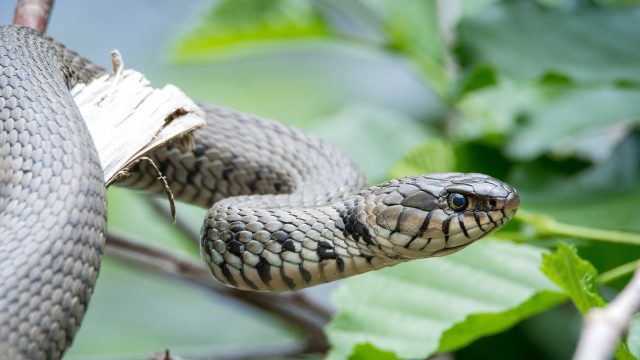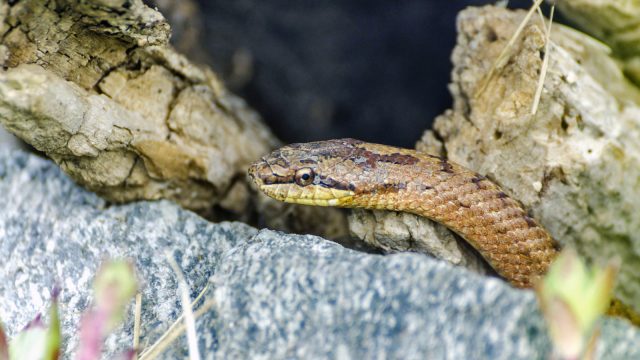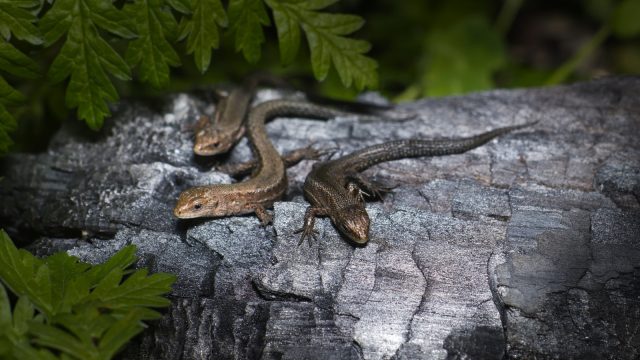The Common Adder, or Common Viper, is Britain’s only venomous snake but is not considered to be highly dangerous. It is not aggressive, but will attack when threatened or alarmed.
Identification
In Britain the Common Adder grows to a maximum length of around 87cm, though their Scandinavian cousins have been known to grow much larger. In truth most adults make it to a respectable 55-60 cm in length. The body is stocky, the head large and fairly square-edged, with a blunt ridge at the end of the snout. Most have a distinctive red eye, always with a vertical pupil, giving them a much more sinister look than the innocuous grass snake.
Unlike many snake species, the sexes can be distinguished by their colouration, though patterns may vary. Females are usually brunette, with dark brown markings on a brown body, whereas the males are more ‘silver-fox’, with a grey body and black markings. Although some individuals may be completely black, most have a pattern of dorsal markings running the length of their bodies. A distinctive “VG” or “XG” crowns the back of the head and continues down the back in zigzags to the end of the tail, making this a recognisable species in most cases.
Overview
The Adder can be found in a variety of habitats, including woods, hedgerows and rocky hillsides. Anywhere that provides opportunities for basking, hunting, hibernating and hiding from predators will support this snake. That said, it will rarely be seen in the garden as it prefers undisturbed habitats.
They are mostly active during the day when they can warm themselves by basking in the sun’s rays. At the first sign of danger, they usually slink off into the undergrowth to hide it out and they tend only to attack when cornered or alarmed. During the cold winter months they hibernate for up to six months.
Younger adders feed on small mammals, frogs, lizards or even spiders. Once in adulthood they move on to larger mammals and amphibians and have been known to climb into trees to take nestling birds or eggs. Their venom makes for a fearsome weapon, though it is rarely fatal in humans. Nevertheless, caution should be shown when encountering this snake as its bite can cause a lot of pain.
During mating season, which is usually around May, males pursue female adders by following scent trails. Once they catch up with their mate, they engage in courting behaviours, moving alongside the female and flickering their tongues on the female’s back. The male then lingers for a couple of days, fighting off any male challengers by raising the front part of their body and pushing them down to the floor until they become exhausted. These ‘battles’ are gentlemanly affairs as neither snake bites the other. Rather the loser admits defeat and skulks off.
In The Garden
Garden sightings of the Adder are rare due to their dislike of disturbed habitats. Adders are solitary creatures and rarely stay in the same place for long. Any you do spot are likely to be passing through in search of richer hunting grounds. Living close to suitable habitats will increase your chances of seeing this snake in your garden. Other than this you can try to make your garden as snake friendly as possible by providing rockeries for them to bask on and hide in, wood piles for them to hide or hibernate in and areas of long, undisturbed grass for them to hunt. And always remember, if you are lucky enough to see an Adder in your garden take care as they are venomous.
Did You Know?
Adder bites are treated using antivenoms which can be made using venom ‘milked’ from the snake. No one in the UK has died from such a bite since 1975.



